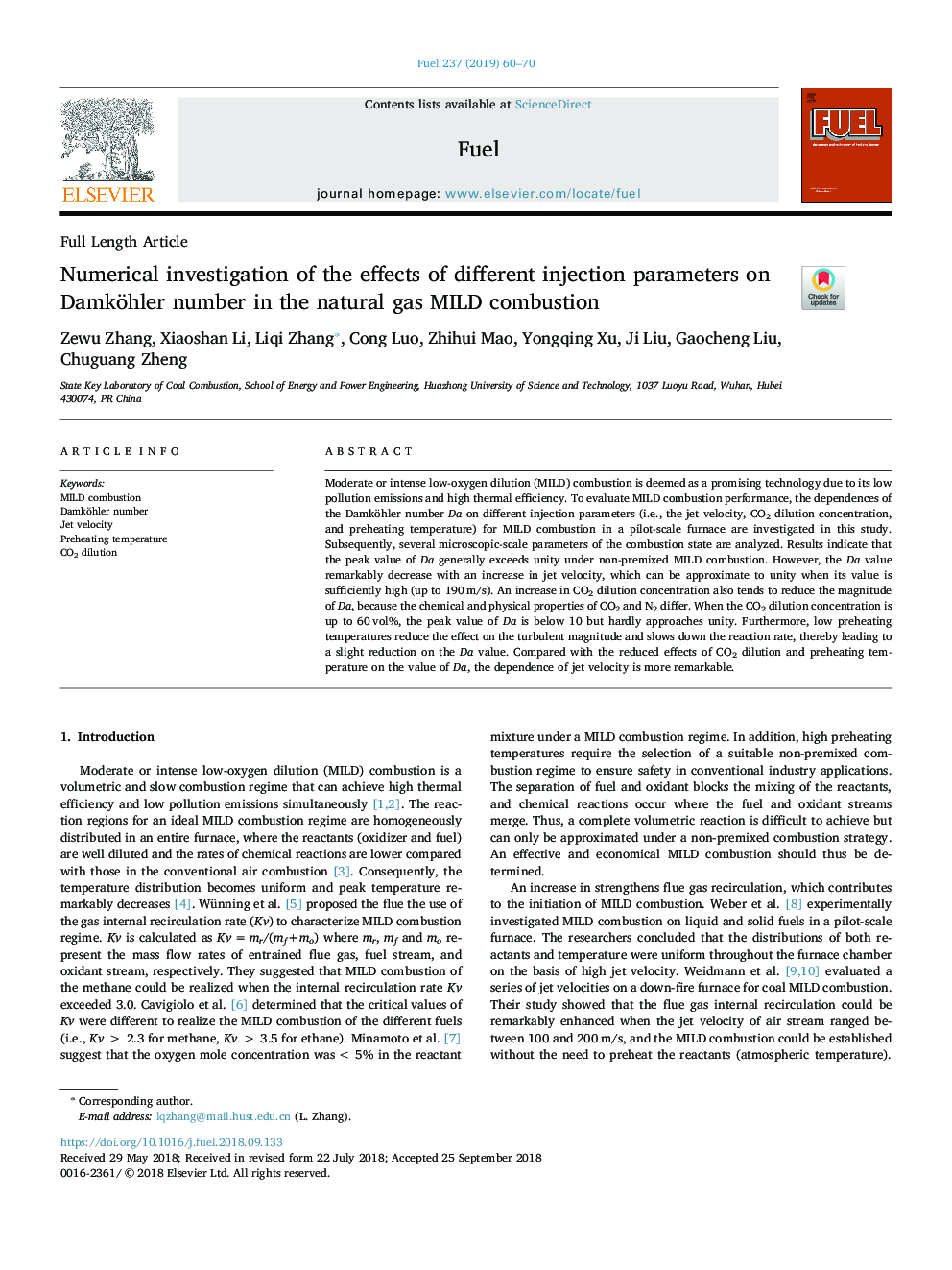| Article ID | Journal | Published Year | Pages | File Type |
|---|---|---|---|---|
| 11016605 | Fuel | 2019 | 11 Pages |
Abstract
Moderate or intense low-oxygen dilution (MILD) combustion is deemed as a promising technology due to its low pollution emissions and high thermal efficiency. To evaluate MILD combustion performance, the dependences of the Damköhler number Da on different injection parameters (i.e., the jet velocity, CO2 dilution concentration, and preheating temperature) for MILD combustion in a pilot-scale furnace are investigated in this study. Subsequently, several microscopic-scale parameters of the combustion state are analyzed. Results indicate that the peak value of Da generally exceeds unity under non-premixed MILD combustion. However, the Da value remarkably decrease with an increase in jet velocity, which can be approximate to unity when its value is sufficiently high (up to 190â¯m/s). An increase in CO2 dilution concentration also tends to reduce the magnitude of Da, because the chemical and physical properties of CO2 and N2 differ. When the CO2 dilution concentration is up to 60â¯vol%, the peak value of Da is below 10 but hardly approaches unity. Furthermore, low preheating temperatures reduce the effect on the turbulent magnitude and slows down the reaction rate, thereby leading to a slight reduction on the Da value. Compared with the reduced effects of CO2 dilution and preheating temperature on the value of Da, the dependence of jet velocity is more remarkable.
Related Topics
Physical Sciences and Engineering
Chemical Engineering
Chemical Engineering (General)
Authors
Zewu Zhang, Xiaoshan Li, Liqi Zhang, Cong Luo, Zhihui Mao, Yongqing Xu, Ji Liu, Gaocheng Liu, Chuguang Zheng,
